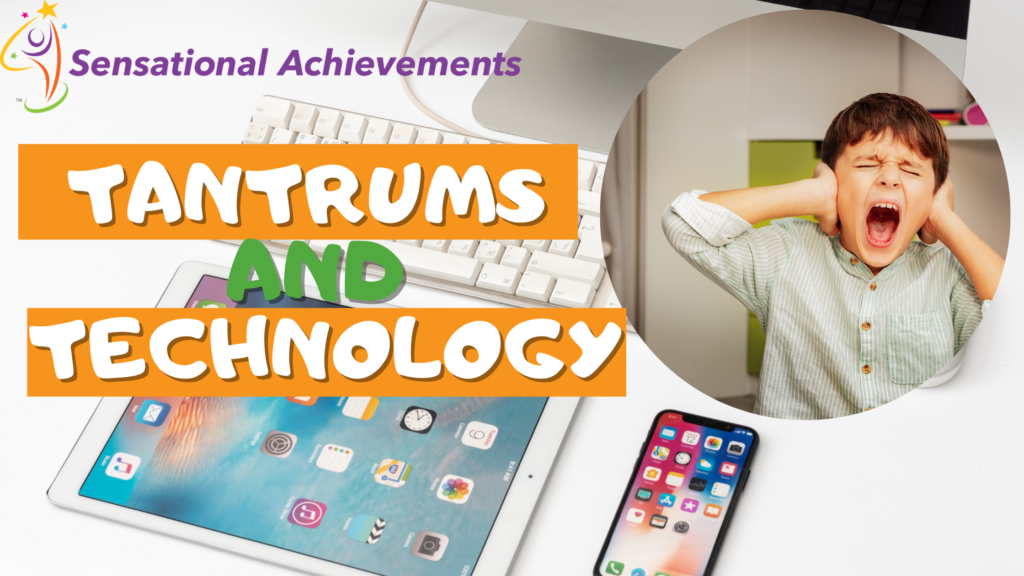
It’s happening again. Time to leave the house to go to school and the screamin erupts as you tell your children it’s time to hand over their tablets. The morning usually goes peacefully as long as the tablets are nearby but the day can go downhill fast if you have to take the tablet abruptly and rush them out the door.
How did we get here? How did such a small object hijack our children’s emotions, leaving them distracted and dysregulated?
And it doesn’t end there. You finally get them off to school only to get a call from the teacher half way through the day that your child needs to be picked up early for being to disruptive or regular emails from the teacher informing you that you child is “off-task” or frequently “out of his seat” or “disturbing the other children.”
More and more we are seeing children struggling to regulate their emotions long after the “terrible twos” have passed and then having problems with focus and attention in school. But this did not happen overnight.
The iPhone was created in 2007. Children born in the same year are now 15 years old and avid users of social media and text messaging to stay connected to their peers. They experience distraction as they anticipate every buzz and notification, anxiety if they don’t get responses from others quickly, fear of missing out, a need for validation and significance based on who and how many people comment on or like their posts.
Fast forward to the children born in 2012 or after. They are basing much of their life experiences on video games, earning points, getting rewards and buying all kinds of things they don’t need with fake money earned from doing gaming challenges. Challenges move quickly to keep them engaged. More and more “quick wins” to keep them going and “level up” More and more time on the phone or tablet while they wait for a doctor’s appointment, travel on a car ride, or sit in the shopping cart while mom is grocery shopping.
We have removed the down time (also known as white space), where all the creativity happens. Where we cultivated patience and persistence. Where children looked around the outside world and asked their parents a million “why” questions and drove them crazy. Where a car ride was an opportunity to look out the window to figure out where you are going, how to get there, and all the landmarks along the way (with a few inevitable fights between siblings). Where we patiently wait for people to return our calls or answer an email because we accept that they may not have access to their computer or voicemail (Now we KNOW they have access and tell ourselves the person on the other end just doesn’t care).
Instead of building the foundational skills for patience, persistence, adaptability, resilience and executive functions for focus and attention, we seem to have chosen the opposite – Quell the inevitable emotional explosion that comes from not getting an immediate reward. Shorten the task because it’s too hard to pay attention to. Use another video game to engage the child in learning. Pass them a tablet so they are quiet during the car ride.
We have hit the easy button – both in school and at home. But it comes with a price.
Children still need to get their human needs met. And those needs will never come from technology. They come from human interactions and from adults putting down their own devices, choosing real people over technology, and engaging in interactive learning activities. It comes from fighting distraction and modeling engagement.
Below are the 6 Human Needs. It’s time to make sure that we, not a smartphone or tablet, are the ones meeting them.
We need to replace the focus on how technology meets those needs with a focus on connection with others and the world around us.
Consistency/Safety – Ensuring children feel like their parents are present and connected – communicating their values as they model behavior. Not inadvertently building a consistent expectation of getting the tablet in every spare moment.
Novelty – Exploring the world with them (even just having children help with dinner) rather than watching them click on the next link in the feed and binge 20 Youtube videos so they stay quiet while you get things done.
Connection – Facilitate shared experiences with family and friends. This is not everyone in the living room together on their respective devices or every child with a laptop in front of them in the classroom.
Significance – Helping children feel seen by peers and family by creating opportunities to be present without distractions from the phone
Growth – Fostering learning and a feeling of empowerment. For children this can mean coming up with a cool idea that all their friends want to try – not just telling their friends how many levels they passed in a video game or muscling through homework.
Contribution – Teach them to spend time with others doing things that build others up or sharing talents to help someone else. Shift the focus away from what they are getting or not getting and how it is making you feel and not offering a tangible reward for participation. The feeling of contributing is the reward even if children don’t recognize it at first.
Do you want to raise a child that is creative, focused, resilient, always learning and growing, and is able to have meaningful relationships with others?
Start by rethinking the balance between screen time and the life experiences children need to support lifelong learning, growth and development. Evaluate your own relationship with technology and boundaries with others who expect you to always be available via phone or email. Download the Family Media Time Planner found at www.healthychildren.org
Is it going to be easy? No. But will it be worth it? Absolutely.








